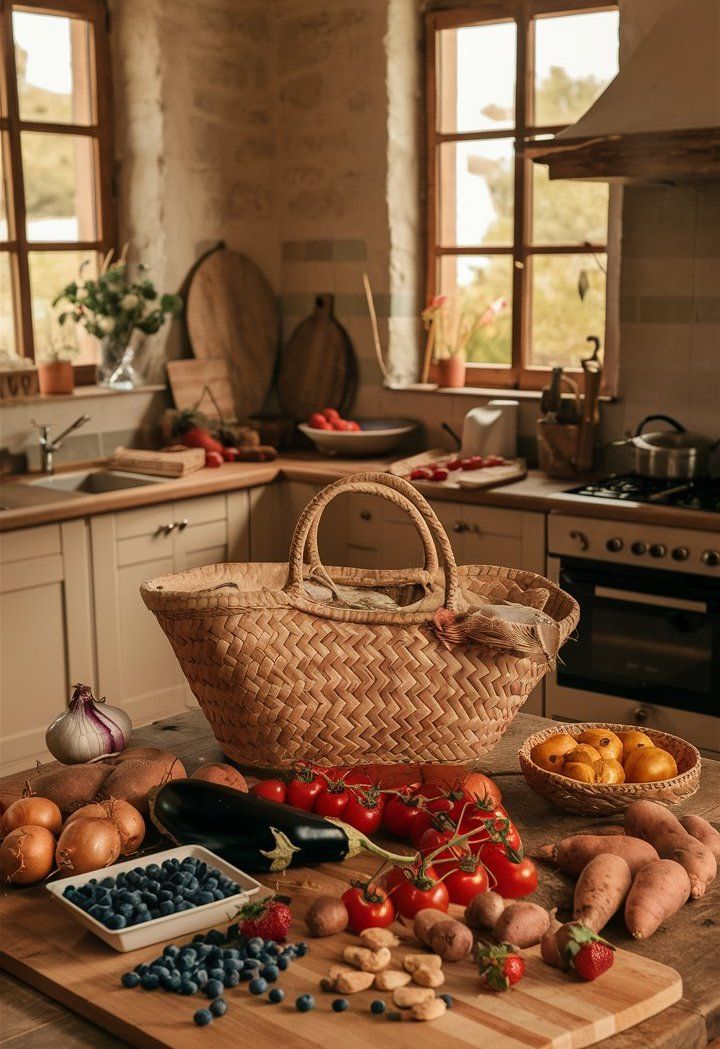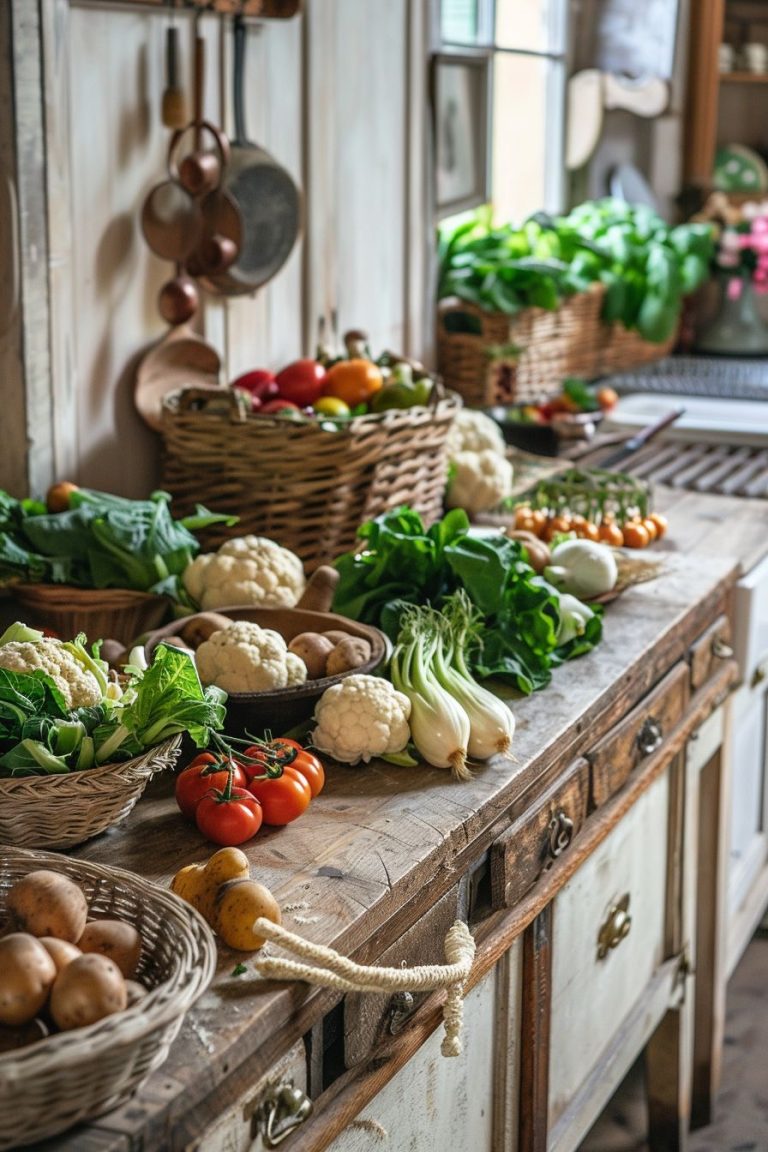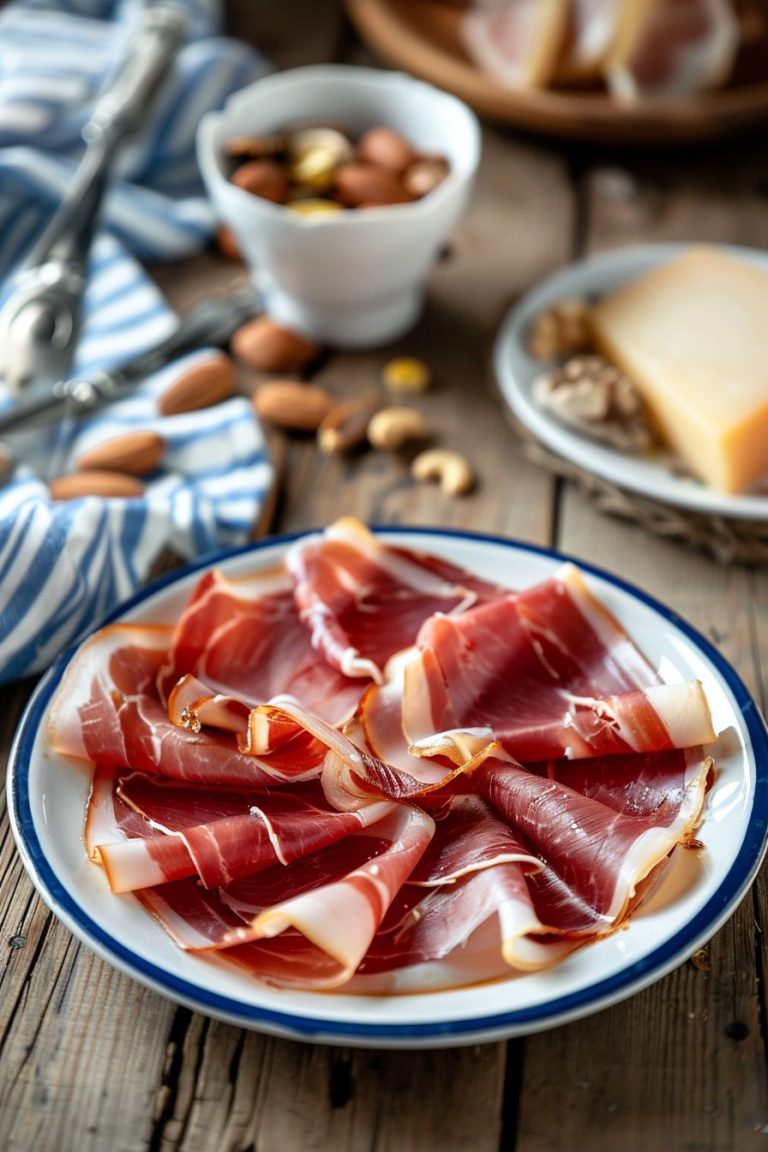Espelette Pepper (Piment d’Espelette)
We may earn a commission through all links on this website. As an Amazon Associate, we earn from qualifying purchases.The Espelette Pepper, or Piment d’Espelette, is a type of chili pepper that is grown in the Basque region of France. It has a long history in the region, dating back to the 16th century when it was first brought over from South America. Over time, the pepper became a staple of Basque cuisine, known for its mild heat and unique, slightly sweet, and smoky flavor.
The Espelette Pepper is a sought-after ingredient in French cuisine, used as a seasoning in many Basque recipes, including meats, stews, and sauces. Its versatility and unique flavor profile have made it a staple in many kitchens and a must-have ingredient to integrate the Basque region into their cooking.
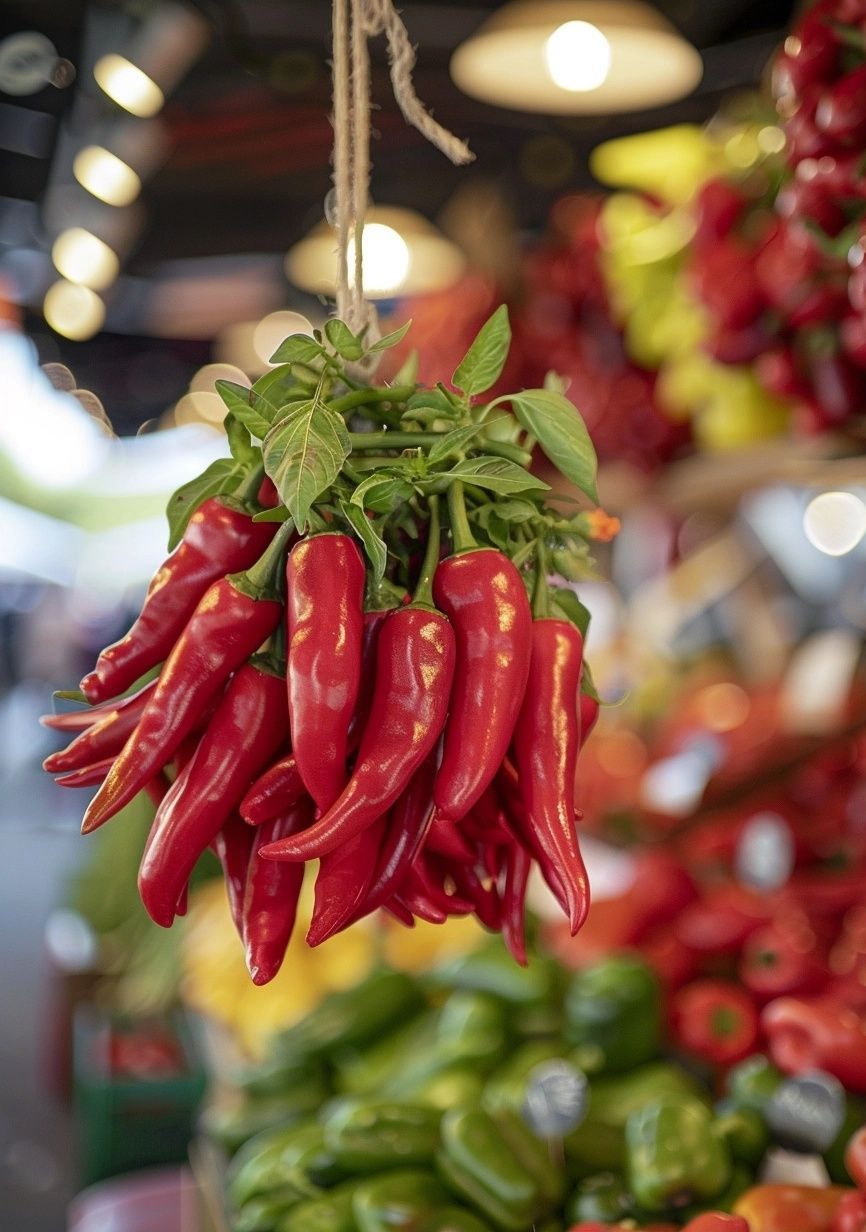
Quick Facts
- Origin: Mexico
- Family: Solanaceae
- Genus: Capsicum
- Species: Annum L.
- Variety: Capsicum annuum, officially registered under the name “Gorria”
- Plant: annual herbaceous
- Size: 7 to 14 cm
- Climate Condition: Tropical atmosphere (mild and humid heat)
If you’re in France, you can buy fresh Espelette peppers at any number of the French farmer’s markets in the region or at the grocery store.
Straight From France Genuinely French, Espelette Pepper powder from France (0.53 Ounce (Pack of 1))
$9.77 ($18.43 / ounce) (as of November 28, 2025 17:29 GMT -05:00 - More infoProduct prices and availability are accurate as of the date/time indicated and are subject to change. Any price and availability information displayed on Amazon at the time of purchase will apply to the purchase of this product.)Types
Espelette peppers exist for consumption in three forms: powder, rope, and whole fresh pepper. It has a beautiful red-orange color.
Rope Pepper
The Espelette pepper rope includes a minimum of 20 peppers up to a maximum of 100 peppers, uniform in size and between 7 and 14 cm long, excluding the stem. Fresh, whole peppers are manually strung directly on the farm, and threaded by the peduncle.
Fresh, Whole Pepper
The fresh, whole Espelette pepper, showing no green, is sold as unprocessed fruit. The pepper’s shape is conical and its outer skin layer is smooth. Fresh Espelette peppers must be between 7 and 14 cm long, excluding the peduncle. These peppers are intended for professionals who intend to process them into powder and derived products.
Powdered Pepper
Espelette pepper powder has an orange and reddish-brown color. It is characterized by an olfactory intensity dominated by fruity, grilled, and hay aromas. It has a strong (but not burning) spiciness that lasts in the mouth. It advances on the palate gradually with a slight sensation of heat. Some describe the Espelette pepper taste as having a sweet note or a hint of bitterness.
The powder must be finely ground so that the pepper particles do not exceed 5 mm. No coloring, additive, or preservative may be added. Espelette pepper powder must be produced using peppers from the same farm.
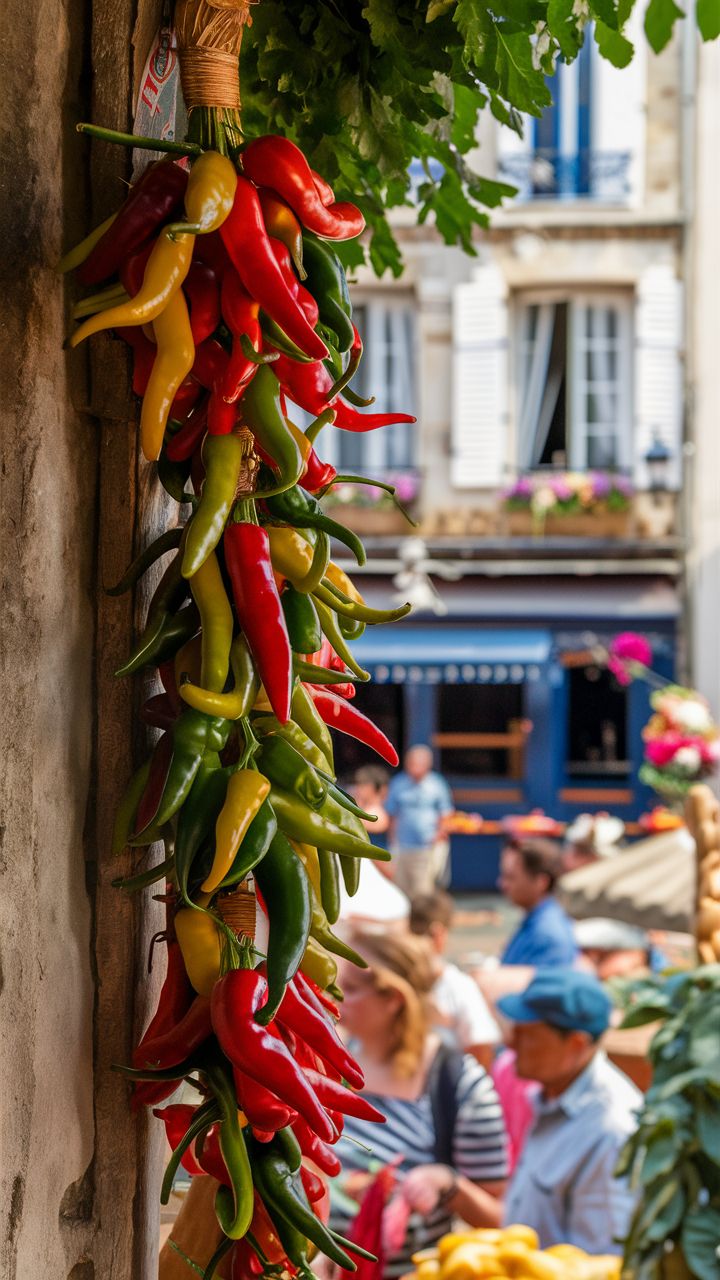
How to Cook with Espelette Peppers
Espelette peppers are incorporated into many French food products: mustard, salt with herbs, and even chocolate bars. This type of pepper can replace certain other peppers, especially in grilled meat or sauces. It is almost as strong as a spicy pepper and measures 4 on the simplified Scoville scale from 1 to 10, and also has enticing aromatic spice qualities. Spicy lover or not – you can still use this French pepper in low doses to flavor your dishes!
How to Store Espelette Peppers and Powder
Like any natural spice, Espelette pepper powder should be stored away from light, in a cool, dry place. It contains no additives, preservatives, or colorants, which gives it exceptional qualities. Consume it soon after opening.
How to Use Espelette Pepper Powder in Everyday Cooking
On a daily basis, you can use Espelette pepper powder in your meal preparations instead of pepper. For example, you can add a teaspoon of Espelette pepper powder as a pepper substitute for cakes, quiches, omelets, muffins, sauces (béchamel, vinaigrette, mayonnaise, etc.), marinades, and to your simmered dishes (tagines, beef bourguignon, sautéed veal). You can also add a dash of Espelette pepper powder to your soups, raw vegetables, grilled meats, and fish dishes.
How to Store Rope of Espelette Pepper
To keep your Espelette Pepper Rope fresh, hang it in your kitchen or in a dry, well-ventilated place. It will continue to dehydrate and take on a dark red color.
How to Use Espelette Pepper Rope in Everyday Cooking
You can use a pepper from your rope and plunge it straight into a pot-au-feu, a court-bouillon, or your sauce-based dishes. You can mince it or sautée it in olive oil with garlic to form the basis of different sautéed dishes.
Is the Espelette Pepper Very Hot?
The Espelette pepper is not too hot. It is associated with sweeter rather than ultra-hot peppers. On the simplified Scoville scale, which measures the intensity of the spiciness, the Espelette pepper is at 4 on a scale of 10. If we take a look at the normal scale, the Espelette pepper is located between the cayenne pepper (30000-50000 Scoville units), and the pepper (0-100 units of Scoville). It stands at 1500-2500 Scoville units.
Capsaicin, the molecule responsible for the spiciness of Espelette pepper, is fat-soluble: it mixes very well with fats but not with water. For a weaker spiciness, consider mixing it with fat.
Espelette Pepper Properties
The Espelette pepper has many culinary purposes: it is a flavor enhancer that reveals the taste of your dishes without masking them, welcoming a tinge of warmth in the mouth.
History of the Espelette Pepper
The Espelette Pepper has been cultivated in the Basque Country since Christopher Columbus brought it back from America. The oldest roots of the pepper are found in Mexico. The earliest explorers managed to spread the cultivation of Espelette peppers around the world, making their way to the vegetable gardens in the province of Labourd, France. From around 1650, the first traces of Pepper around Espelette, France were discovered.
Basque women started to cultivate it first because they found it to be a good replacement for pepper, which was too expensive at the time. The Espelette pepper was employed as a spice both for seasoning and for preserving meats and hams.
Each year, the women of the Basque country selected the seeds of the peppers to sow in the future. They created the Gorria variety, the only farm seed that will produce the Espelette pepper.
To dry the peppers, each fall the women would string the peppers on a rope and place them against a wall of the farm. Once dried, the strings of the peppers were passed to the bread oven still hot from the day before. When they came out of the oven, the peppers, which had become very crunchy, were pounded to make the powder. This Espelette pepper savoir-faire has been transferred from generation to generation in France.
In the late 19th and early 20th centuries, the pepper industry in the Basque region faced challenges, and its production declined. However, in the 1970s, the people of the Basque region began to revive the tradition, and the production of the Espelette Pepper gradually increased.
In 1983, a production cooperative was established to professionalize the production and processing of Piment d’Espelette. Unfortunately, several difficult circumstances lead to its closure. The Espelette pepper cultivation experienced a sharp decline and almost disappeared.
But the Espelette pepper and its exceptional spice made a comeback in the 1990s. With a new push by producers who got together to form a union in 1993, the Espelette pepper obtained official recognition by the French Agriculture Ministry in AOC in 2000 and in AOP in 2002. The Espelette pepper lives on!
Espelette Pepper Production
In the early 2000s, the Espelette Pepper was awarded an AOP (Appellation d’Origine Protégée) designation, recognizing it as a unique and traditional product of the Basque region. The AOP defines the geographical area of cultivation and processing, the dates of planting, and the phytosanitary products that can be used, in order to guarantee the quality of the product.
Production is strictly controlled by the Espelette Pepper Syndicate, founded in 1993. The Syndicat du Piment d’Espelette oversees regulatory projects concerning the management, protection, and promotion of the famous Espelette Pepper. Anyone who wishes to produce Espelette peppers must be a member of the syndicate.
Where the Espelette Pepper is Grown
Contrary to what you might think, the production of Espelette Peppers is not limited to the French village of Espelette, near Biarritz in the Basque Country. Instead, it extends over 10 municipalities. Only part of the town benefits from the AOP which bears its name because it has greatly contributed to the development and recognition of production.
In 2022, the Espelette pepper production sector employed 200 producers, 10 repackers, and 6 processors who worked to manage the 5 million vines planted in France on 731 acres.
The 10 municipalities located in the western part of the Basque Country near the Atlantic Pyrenées region where Espelette peppers are produced include:
- Souraïde and Larressore (retained in full)
- Ainhoa, Ustaritz, Itxassou, Halsou, Jatxou, Cambo-les-Bains, Espelette, Saint-Pée sur Nivelle (partially retained)
The Espelette Pepper-Ezpeletako Biperra AOP specifies that the peppers must be produced, processed, and packaged within this geographical area in order to be sold as “Espelette Peppers” to the public.
Production Cycle
The Espelette pepper flourishes in the heart of a conducive natural environment in France. In between the gently rolling hills not far from the ocean, the production area benefits from a microclimate with mild temperatures in summer and generous rainfall year-round.
The region is boosted by a natural breeze created by a tormented relief. Similar to the subtropical atmosphere where the pepper came from, this French bioclimate allows for fruitful growth of the Espelette pepper.
Here is a summary of the Espelette Pepper production cycle:
- Seed Selection: During the harvest, each producer selects the seeds from the earliest and most robust plants. This allows the rustic variety “Gorria” to be preserved.
- Seeding: In March, the selected seeds are used for sowing. The optimum germination temperature is between 20° and 22°C. It will take 2 weeks for the pepper to reach the two cotyledons stage.
- Transplanting: When the first two leaves lie flat, a third leaf appears in the center, called the first true leaf. At this stage of development, each plant will be transplanted into cells previously filled with potting soil. This gives it the space it needs to grow. For two months, the plants remain covered in a greenhouse.
- Planting: As soon as the weather permits in April or May, the land is prepared. Ground planting is done between April 1 and July 15, in bare soil or mulch. Each pepper is planted 40 cm apart in order to respect the density necessary to cultivate the plant. Irrigation is prohibited beyond one month from the start of planting and from July 15.
- Maintenance: After planting, producers manage weed control and staking. Hoeing in the alleys allows for the oxygenation of the soil. Producers must avoid excess water and prevent the compressing of the soil which could lead to root asphyxiation and the death of the plant.
- Growth: With a rise in temperature and significant rainfall, the plants evolve quickly to reach 1 meter in height by mid-July. The vegetation continues until the first winter frost.
- Harvest: When the peppers turn red, it’s harvest time. The pepper patch is harvested manually in a staggered fashion, from August until winter, but no later than December 1st.
- Sorting and Maturing: Immediately after picking, the crop is cleaned and sorted. The peppers are spread out on wire mesh shelves or strung on long ropes for a period of maturation (15 days minimum). The peppers dehydrate slowly allowing aroma development of tomato, pepper, and other nuanced flavors.
- Processing: When the peppers have reached maturity, they undergo stemming (the hand removal of the peduncle) and then go in for a final drying in the oven at a moderate temperature. Upon exit, while the peppers are crunchy, they are crushed to obtain a pepper powder. The fine grinding brings out the spiciness of the pepper and never leaves a whole seed behind. At this stage, Espelette pepper can also be used freshly harvested to make ropes to be marketed either fresh or dried.
- Packaging: Finally, the pepper is packaged and released for consumption. There are two types of containers: a bag of defined weights (250g, 500g, 1kg or 5kg), or hermetically sealed glass jars.
Appellation Criteria
The Espelette pepper goes through a rigorous quality control process in order to receive the prestigious “AOP” designation allowing it to be sold to the public.
To ensure the authenticity of the peppers, detailed specifications describe how to cultivate the Espelette peppers in open fields, the phytosanitary treatments, how to harvest them manually, and more. An independent certifying body guarantees each producer upholds the commitments to processing and packaging the peppers.
A sample of each batch of powders is taken by an agent and presented anonymously to a trained jury which carries out an organoleptic examination. The color, the intensity of the aromas, and the quality of the spiciness are some evaluated criteria. For ropes and fresh whole peppers, the color and homogeneity of the product will be checked. These phases conclude with a summary assessment that grants or denies the appellation status.
You can recognize the AOP logo on an Espelette Pepper to verify its authenticity. Only peppers stamped with this circular logo are AOP Espelette peppers!



